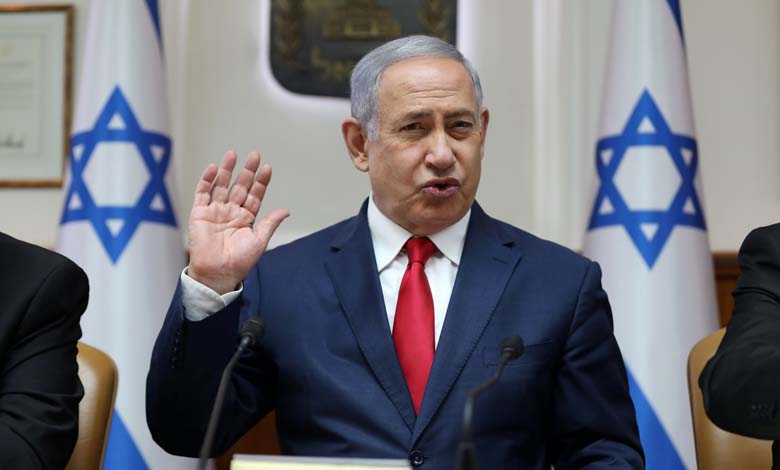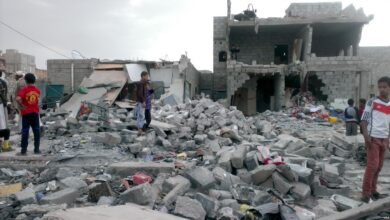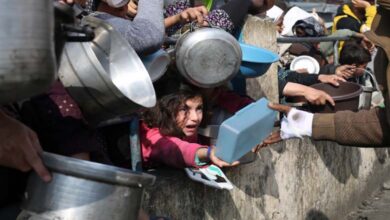Netanyahu’s New Gaza Strategy: Seven Reasons It Risks Failure

Israel is preparing to launch a major offensive in mid-September targeting Gaza City and the central camps, in what it describes as a decisive attempt to dismantle Hamas and recover hostages.
-
Netanyahu changes Gideon’s Chariots 2… and here is the evacuation schedule in Gaza
-
Hostages or Gaza’s Occupation: What Is Netanyahu’s Priority?
Israeli media reports suggest that over 60,000 reservists will be mobilized for this operation, labeled a “critical phase” of the war. The plan also includes a mass evacuation order for one million Palestinians, paving the way for a large-scale ground assault on the enclave’s core.
However, The Times of London argues that this strategy is essentially a repetition of earlier attempts that failed, due to enduring obstacles present since the outbreak of war in October 2023.
The newspaper identified seven key reasons why Netanyahu’s promise of “total victory” remains elusive.
-
Netanyahu calls for accelerating the takeover of Gaza despite warnings
-
Between Street Pressure and Coalition Threats: Scenarios for Netanyahu’s Response to the Gaza Proposal
The Hostage Dilemma: A Military Constraint
An estimated 50 Israeli hostages remain in Hamas custody—around 30 presumed dead and 20 alive. This reality severely restricts military options: storming densely populated areas risks killing those Israel seeks to rescue. The Nuseirat operation in June underscored this dilemma—four hostages were freed, but more than 270 Palestinians were killed, according to Gaza’s health ministry.
No Vision for the Day After
Despite pledges to “eliminate Hamas,” Israel’s government has no plan for postwar governance in Gaza. It rejects both the Palestinian Authority and international frameworks as alternatives. Such a political vacuum all but guarantees the re-emergence of Hamas or the rise of other resistance groups.
-
Netanyahu’s Plan to Occupy Gaza: Months of Military Maneuvers and Civilian Relocation Southward
-
Netanyahu promotes voluntary Palestinian migration amid secret talks with Juba
Urban Warfare: An Unwinnable Battle
Gaza’s dense neighborhoods, tunnels, and interlinked streets provide ideal conditions for guerrilla warfare. Past campaigns show that Israeli control is temporary: militants withdraw under assault, only to reappear once troops leave. This war of attrition makes sustainable occupation impossible.
Civilian Pressure and International Legitimacy
The September plan involves displacing up to one million Palestinians. Images of mass displacement and destruction would fuel global outrage, especially amid mounting criticism of the war from Europe and the United States. Securing international legitimacy for such an operation seems nearly impossible.
-
“I collected my son’s remains from the streets” – A mother’s cry in Gaza as Netanyahu hints at escalation
-
Pressure on Netanyahu: Will Hostage Videos Pave the Way for a Prisoner Swap Deal?
Internal Division and Political Strain
In Israel, weekly protests are growing, demanding a deal for the hostages’ release. Many families fear that a military escalation would further endanger their loved ones. This divide, compounded by Netanyahu’s political and legal troubles, undermines coherent decision-making at the highest levels.
A Stalled Negotiation Process
Hamas recently offered to release ten live hostages and the remains of eighteen others in exchange for a 60-day truce. Netanyahu rejected the proposal, insisting on an all-inclusive deal. This paradox—seeking to rescue hostages militarily while rejecting partial agreements that could save lives—illustrates Israel’s strategic deadlock.
-
Netanyahu Considering Gaza Annexation or Encirclement if Truce Talks Fail
-
Netanyahu denies Gaza famine, Trump responds… but the facts on the ground speak for themselves
The Failure of Past Strategies
Since October 2023, Israel has carried out multiple operations under different names, yet none succeeded in securing Gaza or dismantling Hamas. Increasing troop numbers or intensifying bombardments has not resolved the central dilemma: how to defeat an organization deeply embedded among civilians without triggering humanitarian disaster or endangering hostages.
According to The Times, this new plan appears less like a decisive strategy and more like a political maneuver to buy time. Without a credible political framework, with negotiations stalled and public pressure mounting, Netanyahu’s vision of “total victory” risks remaining a distant illusion.












